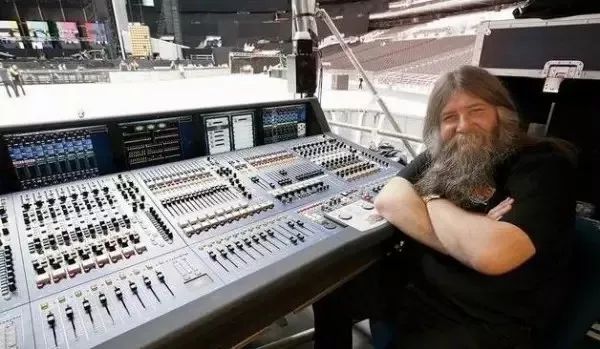Powerful ear senses, a highly skilled sound engineer
Tuning can be divided into recording system tuning and sound reinforcement system tuning. The sound operator who tunes the recording system is usually called the sound engineer, while the sound operator of the sound reinforcement system is traditionally called the sound engineer, and the two can also be collectively called the sound engineer. The goal of the sound engineer is to adjust the sound equipment, such as microphone, mixer, peripheral equipment, etc., to obtain the desired sound effect.

Professional audio practitioners have been trained for a long time. This training is not just to train the hearing curve to be more sensitive, but to train the ability to distinguish. Just like the taster training taste, high-level wine tasters can produce wine. Year, place of origin, etc., so is the same for professional sound engineers and sound engineers. If he has heard the sound of real live instruments for a long time, and the recording and playback are professional equipment, then the sound engineer has formed a correct judgment of sound When he hears the wrong instrument sound, he will know how to put the microphone position to correct the mistake of picking up the sound, which frequency band is modified on the mixer to correct the defect of the playback frequency response, etc., all of which require time and experience. accumulation.

The experienced sound engineer can adapt to the harsh listening environment, because the actual place often requires the sound engineer to tune in the last row of the auditorium or even in the sound control room, which has the same volume and tone as the auditorium. Very different, so what should I do? Experienced tuner will play familiar music, listen back and forth in the tuning room of the control room and in the auditorium, find different points to adapt to the environment, and return to the control room to imagine the sound of the scene, just like the common name open brain put.
Therefore, a mature sound engineer needs to form a sound world view of sound, and cultivate the ability to feel the frequency, strength, and rhythm of sound. With these capabilities, you can make necessary modifications and beautification of various sounds to produce a variety of beautiful sound effects.

The sound engineer can do more specialized listening training every day to train the senses of the ear.
Extreme bass: The frequency range is below 40Hz, which is responsible for the severity of the sound. The amount of this frequency determines the weight of the sound. Most speakers can only emit a small amount of extremely bass sound, but it is an indispensable and important part of the sound. When the bass is suitable, the sound is strong and powerful. It can control the sound of thunder, bass drum, bass and organ. Excessive boost will make the sound confusing.
Bass: The frequency range is between 40 and 50 Hz. It is responsible for the width of the sound. It can also be said that it is responsible for the softness of the bass. Bass instruments such as guitars and drums are located in this band. Excessive boost will make the bass soft and sound like a long or muddy sound; when appropriate, the bass will relax properly, and when it is insufficient, the sound will be thin and underfull.
Mid-bass: The frequency range is between 150 and 500 Hz. It is responsible for the strength of the sound. It can also be said that it is responsible for the hardness of the bass. The fundamental frequency of the human voice is located in this frequency band. When the frequency band is insufficient, the singing voice will be overwhelmed by the sound of music, and the sound will sound a little soft; when it is too strong, the bass will be stiff and tight, and the intensity will increase; when appropriate, the bass will be strong and tough.
Mid-range: The frequency range is between 500 and 2 kHz, which is responsible for the brightness of the sound. It contains the low-order harmonics and overtone components of most musical instruments. Too strong will cause the language to produce a sound similar to that heard on the phone like from a small jar. . The characteristic sounds of percussion music such as snare drums are in this range. When appropriate, the sound is clear and bright; when insufficient, there is a dim feeling.
Mid-range tones: The frequency range is between 2-5kHz, responsible for the transparency of the sound, which is the most sensitive part of human listening. When the sound is raised, it is like adding an exciter, the characteristic sound of a stringed instrument (such as the bow of the string and the friction of the string) Sound, the sound of the finger corner strings of plucked music) is located in this frequency band; when it is too strong, it will mask the details of the syllables of the voice sound; when it is insufficient, the sound penetration decreases.
Treble: The frequency range is between 5-10kHz, which is responsible for the brittleness of the sound, affecting the distance, intimacy and color of the sound. When it is too strong, it will make the sound of woodwinds (such as piccolo and flute) and violin stand out. The tooth sound is obvious, and the sound is crisp; when there is insufficient, the fricative cannot be expressed, and the sound is not gorgeous.
Super high pitch: The frequency range is above 10kHz, which is responsible for the fineness and resolution of the sound. When suitable, the sound transparency of the triangle iron and stand cymbal is true, the golden light is splashed, and the rhythm of the sand hammer is clearly visible; when it is too strong, the metal feel is obvious; The play of the details of the sound, the situation where multiple different sounds are hidden from each other is aggravated, and the sound has the feeling of being stirred into a pot of porridge.
When listening, you can boost or attenuate the above 7 frequency bands to feel the sound changes. When you start training, you may wish to increase the attenuation. As the listening level increases, you can gradually reduce the amount of attenuation. If any frequency band is boosted and attenuated by 3db, the correct judgment can be made, which means that the promotion and attenuation of different frequency bands have basically passed.






